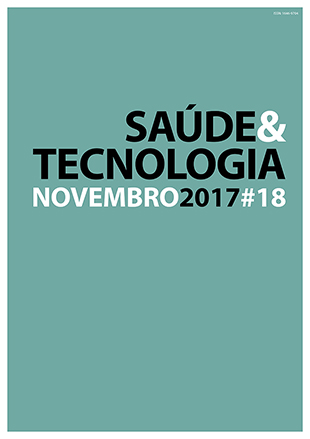The role of plain radiography in fetal and newborn post-mortem evaluation
DOI:
https://doi.org/10.25758/set.2071Keywords:
Autopsy, Post-mortem, Fetus and newborn, Forensic radiology, Infant mortality, Radiographic osteometryAbstract
The wide range of applications and improvements of medical imaging for forensic purposes has undergone past years of huge expansion and development. Thus, our study aim is to demonstrate the role of radiographic fetal osteometry in fetuses and newborns post-mortem. From a methodological point of view, this study was based on extensive bibliographic research, followed by an observational and retrospective study. From data of biometric and anthropometric parameters extracted from autopsies and radiographs performed on 152 fetuses and newborns, from 2014 to 2015, it can be observed that the results achieved were highly correlated with gestational age. As a primary outcome, we found statistical evidence in radiographic osteometry (r=0.529, p<0.01) which measures are linked with gestational age. We conclude that radiographic evaluation in autopsies of fetuses and newborns is important in the determination of fetal or postnatal underdevelopment.
Downloads
References
Nobel Foundation. Nobel lectures of physics 1901-1921. Amsterdam: Elsevier; 1967.
Baglivo M, Winklhofer S, Hatch GM, Ampanozi G, Thali MJ, Ruder TD. The rise of forensic and post-mortem radiology: analysis of the literature between the year 2000 and 2011. J Forensic Radiol Imaging. 2013;1(1):3-9.
Marques VE. Sistemas CAD e patologia intersticial pulmonar [Dissertation]. Porto: Faculdade de Engenharia da Universidade do Porto; 2010.
Alves B. Investigação radiológica em ciências forenses: proposta de pós-graduação (Vol. I) [Dissertation]. Barcarena: Universidade Atlântica; 2015.
Arthurs OJ, Calder AD, Klein WM. Is there still a role for fetal and perinatal post-mortem radiography? J Forensic Radiol Imaging. 2015;3(1):5-11.
Arthurs OJ, Calder AD, Kiho L, Taylor AM, Sebire NJ. Routine perinatal and paediatric post-mortem radiography: detection rates and implications for practice. Pediatr Radiol. 2014;44(3):252-7.
Carneiro C, Curate F, Cunha E. A method for estimating gestational age of fetal remains based on long bone lengths. Int J Legal Med. 2016;130(5):1333-41.
Carneiro C, Curate F, Borralho P, Cunha E. Radiographic fetal osteometry: Approach on age estimation for the portuguese population. Forensic Sci Int. 2013;231(1-3):397.e1-5.
Sieswerda-Hoogendoorn T, van Rijn RR. Current techniques in postmortem imaging with specific attention to paediatric applications. Pediatr Radiol. 2010;40(2):141-52.
Harcke HT. The case for postmortem imaging. Pediatr Radiol. 2010;40(2):138-40.
Arthurs OJ, van Rijn RR, Taylor AM, Sebire NJ. Paediatric and perinatal postmortem imaging: the need for a subspecialty approach. Pediatr Radiol. 2015;45(4):483-90.
Arthurs OJ, Taylor AM, Sebire NJ. Indications, advantages and limitations of perinatal postmortem imaging in clinical practice. Pediatr Radiol. 2015;45(4):491-500.
Archie JG, Collins JS, Lebel RR. Quantitative standards for fetal and neonatal autopsy. Am J Clin Pathol. 2006;126(2):256-65.
Instituto Nacional de Estatística, PORDATA. Esperança de vida à nascença: total e por sexo (base: triénio a partir de 2001) [homepage]. Lisboa: PORDATA; 2017 [updated 2017 May 29]. Available from: https://www.pordata.pt/DB/Workspace_Table_PT.aspx
Lei n.º 16/2007, de 17 de abril. Diário da República. 1ª Série(75).
Direção-Geral da Saúde. Natalidade, mortalidade infantil, fetal e perinatal, 2010/2014. Lisboa: DGS; 2015.
Downloads
Published
Issue
Section
License
Copyright (c) 2022 Saúde e Tecnologia

This work is licensed under a Creative Commons Attribution-NonCommercial-NoDerivatives 4.0 International License.
The journal Saúde & Tecnologia offers immediate free access to its content, following the principle that making scientific knowledge available to the public free of charge provides greater worldwide democratization of knowledge.
The journal Saúde & Tecnologia does not charge authors any submission or article processing charges (APC).
All content is licensed under a Creative Commons CC-BY-NC-ND license. Authors have the right to: reproduce their work in physical or digital form for personal, professional, or teaching use, but not for commercial use (including the sale of the right to access the article); deposit on their website, that of their institution or in a repository an exact copy in electronic format of the article published by Saúde & Tecnologia, provided that reference is made to its publication in Saúde & Tecnologia and its content (including symbols identifying the journal) is not altered; publish in a book of which they are authors or editors the total or partial content of the manuscript, provided that reference is made to its publication in Saúde & Tecnologia.







